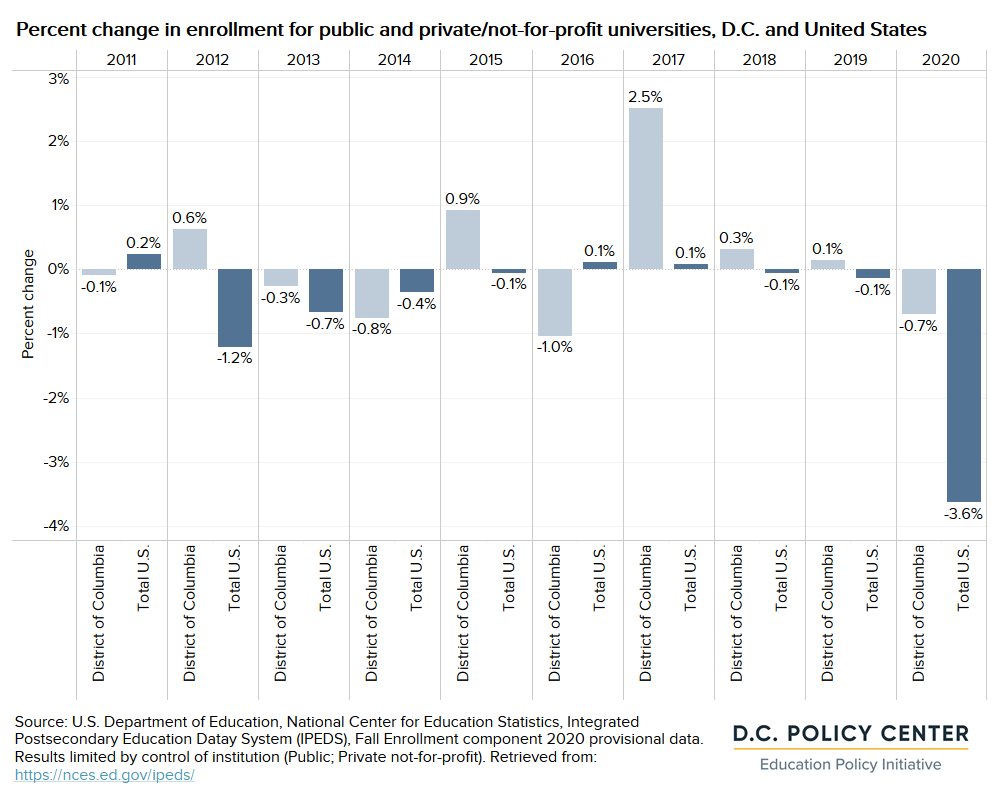The pandemic took a toll on higher education enrollment across the country in the Fall of 2020. Many students delayed entry to universities, took a break to avoid remote learning, or decided on a different postsecondary plan entirely.1 Nationally, enrollment across public and private/not-for-profit postsecondary institutions (including undergraduate, graduate, two-year, and four-year programs) declined by 3.6 percent from Fall 2019 to Fall 2020.2 D.C.’s enrollment likewise declined, but to a lesser extent.
From Fall 2019 to Fall 2020, the number of students enrolled in public or private/not-for-profit postsecondary institutions in D.C. declined by 597 students, or just 0.7 percent.3 The decline in enrollment follows three years of growth for universities in the District. In several years during the last decade and before this period of growth, D.C. experienced enrollment declines similar to the drop seen during the first full pandemic, fall 2020.
Changes in the number of undergraduate students are the reason behind D.C.’s current enrollment decline. D.C. had 759 fewer undergraduate students in Fall 2020 than in Fall 2019, a decline of 1.7 percent. This is smaller than the national 5 percent decrease in undergraduate students. The graduate student population increased in D.C., by 162 students or 0.4 percent, which is lower than the growth nationally in graduate enrollment (2.3 percent).
While some of the decline in undergraduate enrollment may be explained by students deciding not to re-enroll, the biggest hit in D.C. came from first-time degree-seeking undergraduate students. Compared to 2019, D.C. had 840 fewer first-time undergraduate students in 2020, a decrease of 8.6 percent. Nationally, the number of first-time undergraduate students decreased by 9.3 percent, meaning D.C. did not see as big an impact on university decisions as the national trend. D.C.’s drop in enrollment, while not as big as the drops seen nationally, could have implications for future college enrollment, as well as the associated economies of areas close to campuses.
Endnotes
- Conley, B. and Massa, R. (2022). The Great Interruption. Inside Higher Ed. Retrieved from https://www.insidehighered.com/admissions/views/2022/02/28/enrollment-changes-colleges-are-feeling-are-much-more-covid-19
- U.S. Department of Education, National Center for Education Statistics, Integrated Postsecondary Education Data System (IPEDS), Fall Enrollment component 2020 provisional data. Results limited by control of institution (Public; Private not-for-profit).
- U.S. Department of Education, National Center for Education Statistics, Integrated Postsecondary Education Data System (IPEDS), Fall Enrollment component 2020 provisional data. Results limited by control of institution (Public; Private not-for-profit).
